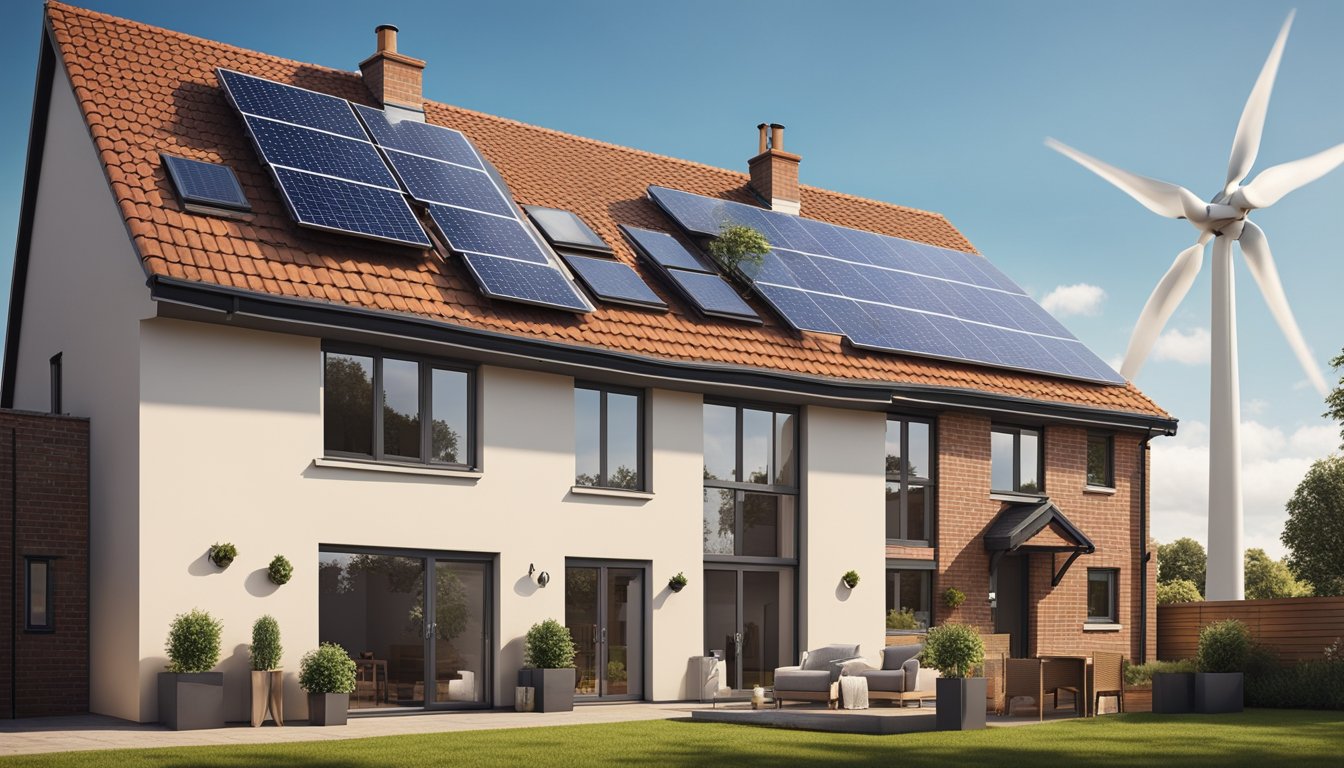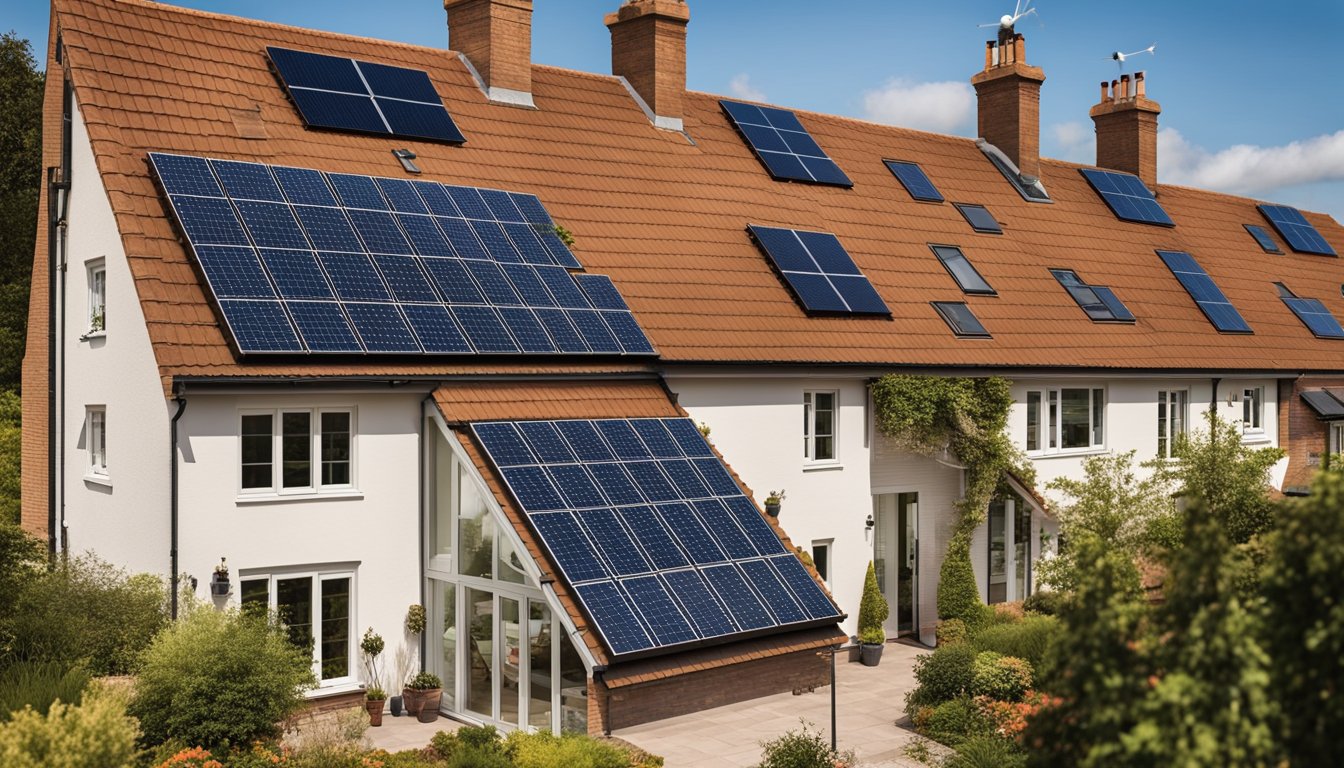Late updated: 09 May 2025 09:05
Written by: Eleanor Hartman
Understanding UK Green Home Energy Solutions: A Guide to Sustainable Living
In today's rapidly changing world, the need to reduce our carbon footprint is more pressing than ever. Green home energy solutions in the UK are becoming a cornerstone in the pursuit of sustainability, providing innovative ways to enhance energy efficiency and reduce emissions. Adopting green technologies at home not only contributes to environmental conservation but also offers potential financial savings through reduced energy bills.

Our journey towards a sustainable future involves integrating renewable energy sources, such as solar panels and wind turbines, into residential settings. With government initiatives like the Green Homes Grant, homeowners in the UK are incentivised to take the leap into cleaner, more efficient energy systems. These initiatives reflect the country's commitment to achieving net-zero carbon emissions.
Exploring these solutions could transform your home into a modern, energy-efficient space, and serve as a model for sustainable living. We will examine key components of these innovations, their impact on our lives, and answer frequently asked questions to guide you in making informed decisions.
Key Takeaways
- UK green home solutions aim for energy efficiency and carbon reduction.
- Government schemes support the adoption of green technologies.
- Transitioning presents benefits for finances and the environment.
Key Components of UK Green Home Energy Solutions

Our green home energy solutions consist of several complementary components aimed at enhancing energy efficiency and reducing emissions. By implementing strategic home improvements, investing in renewable technologies, and utilising supportive government initiatives, homeowners can achieve a more sustainable living environment.
Energy-Efficient Home Improvements
Energy-efficient home improvements are fundamental in reducing energy consumption. Proper insulation, such as loft insulation, can significantly lower energy bills by preventing heat loss. Double-glazed windows further enhance a home's energy effectiveness by maintaining temperature. Seal gaps and draughts to improve efficiency. The Energy Saving Trust is a valuable resource, offering guidance on improving the housing stock. By focusing on insulation and draught-proofing, we can optimise the domestic heat environment and contribute to the net zero targets.
Renewable and Low-Carbon Technologies
Investing in renewable and low-carbon technologies supports our transition to a sustainable home. Heat pumps, including air source and ground source varieties, offer efficient heating solutions while reducing carbon emissions. Biomass boilers represent another low-carbon option by utilising organic materials for energy. Implementing solar panels and harnessing wind power are effective ways to incorporate renewable energy. By adopting these technologies, we can decarbonise domestic heat and move closer to clean energy goals.
Government Policies and Funding Schemes
Government policies and funding schemes play a crucial role in promoting green home energy solutions. The Green Homes Grant was introduced to provide financial assistance for energy savings projects, although it has since closed. We should stay informed about new initiatives such as the hydrogen strategy, which explores low-carbon hydrogen's potential in heating. Additionally, grant vouchers can offset costs for implementing renewable energy systems. Understanding and leveraging these policies can enhance our ability to meet environmental objectives.
The Path Towards a Sustainable and Net Zero Future
We are committed to reducing our carbon footprint through coordinated efforts in decarbonisation and responsible leadership by energy providers and industrial leaders. Addressing the climate emergency requires innovative policies and investment in renewable resources.
Decarbonisation and Energy Transition
In the pursuit of a net zero future, decarbonisation stands as a critical pillar. The UK's strategy focuses on reducing emissions across all sectors, making significant progress in the energy transition. This involves shifting from fossil fuels to renewable energy sources, such as wind and solar power.
Energy providers play an active role, investing in technologies that improve energy efficiency. Efforts are being made to optimise industrial processes, reducing greenhouse gas emissions. By adopting sustainable solutions, we can lower our carbon footprint, contributing to a cleaner and more sustainable future.
Government policies further support these initiatives, providing incentives for green technology adoption. Through regulatory frameworks and funding, the transition is gaining momentum. This approach ensures that both residential and commercial sectors contribute to our goals, moving towards a sustainable energy landscape.
The Role of Industry Leaders and Energy Providers
Industry leaders and energy providers are instrumental in spearheading the drive towards net zero. E.ON and similar companies are investing in innovation to harness clean energy effectively. These organisations are responsible for pioneering initiatives that align with sustainability goals.
A sustainable future demands collaboration. By partnering with government entities, industry leaders influence policy development. This collaboration ensures that strategies are both ambitious and feasible. Leaders in various sectors must adopt forward-thinking strategies to champion the use of clean and renewable energy.
Energy providers are central to this shift. Through investing in new technologies, they bolster the transition to greener solutions. Their role in reducing emissions is pivotal. By setting high standards, they pave the way for other sectors to follow suit, ensuring a unified effort in combating the climate crisis.
Frequently Asked Questions

In exploring UK green home energy solutions, there are several key aspects to consider. This includes enhancing energy efficiency, identifying providers of renewable energy, and understanding government strategies, among others.
What measures can be taken to enhance a home's energy efficiency in the UK?
We can improve home energy efficiency through insulation, upgraded windows, and efficient appliances. Retrofitting homes can substantially reduce energy consumption. Smart meters, managing energy usage, and home audits are also vital steps.
Which companies supply entirely renewable energy for domestic use in the UK?
100Green and other firms focus on renewable energy supply. Completely renewable electricity options are increasingly available. These providers aim to reduce fossil fuel reliance. Customers benefit from cleaner energy sources, supporting environmental goals.
How does the UK government's strategy on green energy address domestic sustainability?
The UK government's strategy emphasises energy-saving improvements. Schemes like the Green Deal support these initiatives. Funding and guidance help homeowners implement sustainable practices. These efforts contribute to nationwide sustainability and carbon reduction targets.
What are the leading renewable energy solutions for residential properties?
Solar panels and heat pumps are at the forefront. They are popular for reducing energy costs and emissions. Wind turbines suit specific locations. Combined, these solutions provide compelling residential options.
How do solar roofing solutions, such as Roofit, contribute to green energy in the UK?
Roofit and similar solutions integrate solar technology with roofing. These innovations maximise renewable energy generation. They offer aesthetic and functional benefits. Homeowners can reduce their carbon footprint while maintaining roof integrity.
In the context of UK green building, what constitutes the best practices for renewable installations?
We should prioritise thorough assessments and skilled installation. These ensure system effectiveness. Integration with existing structures is crucial. Best practices include adhering to safety standards and compliance with regulations.